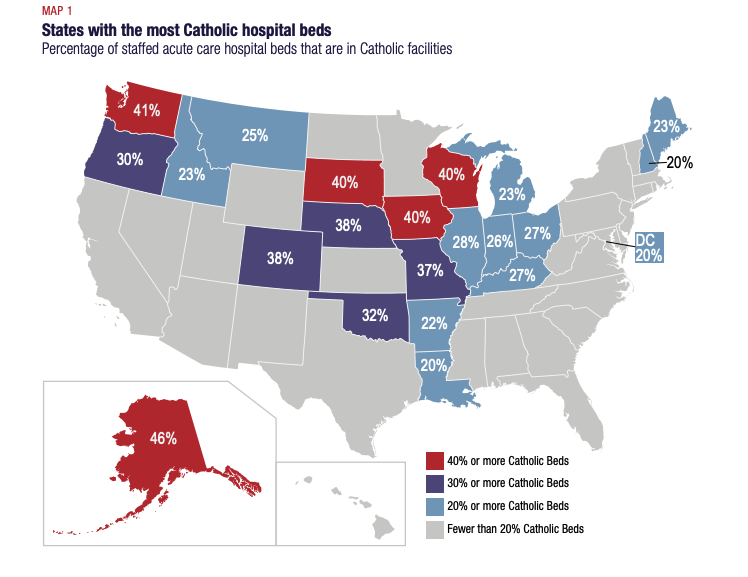Bigger and Bigger: The Growth of Catholic Health Systems
Authors
Tess Solomon, MPH
Lois Uttley, MPP
Patty HasBrouck, MBA
Yoolim Jung, MPH
This publication was made possible through generous support from the Tara Health Foundation.
Executive Summary
In 2020, a new round of hospital data analysis has documented nearly two decades of growth by Catholic health systems. Through mergers, acquisitions, business partnerships, and expansion into new types of care, these systems are extending the reach of Catholic health restrictions across the country.
1. Catholic health systems are growing and exerting greater influence as they control more hospitals and physician practices, while expanding into the growing sectors of urgent care, retail health clinics and ambulatory surgery.
- The ten largest Catholic health systems have grown and strengthened through mergers and acquisitions, and now control significantly more short-term acute care hospitals than they did two decades ago.
- The operational reach of these systems extends beyond traditional acute care hospitals and into all categories of inpatient facilities such as rehabilitation hospitals, substance abuse treatment centers and other inpatient specialty care programs.
4 of the 10 largest health systems in the country are Catholic with facilities in 41 states
Catholic health systems are expanding outside the hospital setting. The ten largest Catholic health systems operate 864 urgent care centers, 385 ambulatory surgery centers, and 274 physician groups.
2. The number of short-term acute care hospitals operating under Catholic health restrictions grew by more than 28 percent over the last two decades, even as the number of non-Catholic short-term acute care hospitals dropped by nearly 14 percent.
Currently, 15.8 percent of all short-term acute care hospitals in the United States are Catholic-owned or are affiliated with a Catholic system, and thus following all or some of the Catholic health restrictions.
3. The number of communities reliant solely on a Catholic short-term acute care hospital has continued to grow. In ten states, 30 percent or more of all short-term acute care beds are in Catholic hospitals, and 30 percent or more of all births happen in a Catholic hospital.
- In 2020, there are 52 hospitals operating under Catholic restrictions that are the sole community providers of short-term acute hospital care for people living in their geographic regions.
- In Alaska, 46 percent of all acute care beds are in a single Catholic hospital that is more than double the size of any other hospital in the state.

4. Despite their stated missions of serving the poor, Catholic hospitals as a group serve a lower percentage of Medicaid-insured patients than other hospitals — and provide slightly less charity care.
Medicaid-insured patients constitute 7.2 percent of discharges at Catholic hospitals compared to 8.3 percent at other nonprofit hospitals and 13.6 percent at public hospitals.
5. Catholic hospitals and health systems receive nearly $48 billion of taxpayer dollars each year, in the form of Medicare and Medicaid reimbursements, while seeking expansion of government permission to use religious doctrine to restrict care.
The $47.8 billion in net patient revenues from Medicare and Medicaid reported for Catholic hospitals and health systems is up from $27 billion in 2011.8. This 76 percent growth in net patient revenue is far greater than the overall 25 percent growth for all hospitals and is likely due to the increasing number of Catholic hospitals.
In this report, we highlight the need for:
- Greater transparency about hospital and health system ethics policies that prohibit specific health care services.
- Strengthened public oversight of hospital and health system mergers, acquisitions and affiliations.
- Greater protection of individual patients’ rights.
